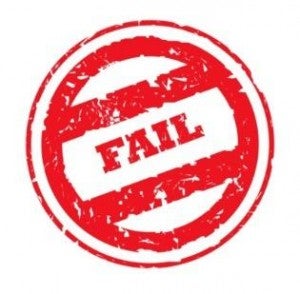Clean Air Report Card: CO, WY Counties Get F’s Due To Oil And Gas Pollution

As a parent, I would not be pleased if my kids brought home F’s on their report cards. Stern talks with my children, frantic phone calls and scheduled meetings with teachers and administrators would ensue. Plans of action would be crafted. It would be an urgent wake-up call.
This week, several counties in Colorado and Wyoming brought home poor grades on their clean air report cards. The American Lung Association examined the levels of damaging ozone pollution in counties in these two western states and several of them are simply not making the grade.
High ozone levels are not new to Colorado. Like many large metropolitan areas, Denver has struggled with ozone pollution (commonly known as smog) for many years. But historically, such problems have been limited to the summertime and to the Denver metropolitan area. Now unhealthy levels of ozone are becoming a common occurrence year-round and are emerging in rural parts of Colorado and Wyoming.
The culprit? Air pollution from oil and gas development, which is just one of the environmental risks associated with a booming natural gas industry.
ALA’s annual State of the Air report gave failing air pollution grades last week for ozone pollution to Arapahoe and Larimer Counties in Colorado and Sublette County in Wyoming. In addition, Boulder and Weld Counties, Colorado and Fremont County, Wyoming both received D’s.
A deeper look at the subpar performers in Colorado reveals a link between high oil and gas development and high ozone levels. Boulder, Larimer and Weld Counties comprise an oil and gas field called the greater Wattenberg area, a region that accounts for roughly 40 percent of the state’s oil and gas wells and represents two-thirds of all new drilling permits issued in the state. A study released earlier this year by Cooperative Institute for Research in Environmental Sciences also indicated oil and natural gas operations in Weld County to be the dominant wintertime source of certain gasses that act as precursors for ozone.
Ozone pollution is created by an interaction between two different sorts of air pollutants, oxides of nitrogen and volatile organic compounds (“VOCs”). Oil and gas development provides a significant source for both of these air contaminants. In fact, oil and gas development is the only major emission source for these pollutants in Fremont and Sublette Counties in Wyoming. Moreover, regulators in Colorado have identified the oil and gas industry as the biggest source of VOC emissions in the state and compressor engines and drill rigs used at oil and gas facilities as the biggest source of oxides of nitrogen in the Front Range ozone nonattainment area.
Health studies have shown that exposure to high levels of ozone pollution leads to lung problems, difficulty breathing, increased susceptibility to infections and other respiratory ailments, such as asthma attacks, a leading cause of hospital visits especially among children, and even premature deaths.
Regulators in Wyoming and Colorado recognize that air pollution from the oil and gas sector is a problem. Wyoming has formed a task force to identify steps to further reduce ozone precursors from oil and gas activities in its Upper Green River Basin. Colorado regulators have similarly instituted a series of stakeholder meetings to develop requirements to reduce ozone, as well as other pollutants, such as methane (a powerful greenhouse gas), associated with oil and gas activities.
Colorado and Wyoming are rightly recognized as national leaders when it comes to enforcing clean air measures for the oil and gas industry. Both states’ “green completion” requirements for technologies and techniques that limit air pollution during the completion process of oil and gas wells, as well as other requirements for leaky equipment, formed the basis for new national standards to reduce pollution from the oil and gas industry. And both states’ oil and gas industries have experienced healthy growth since these state clean air measures were put in place, demonstrating that development can go hand in hand with rigorous clean air regulations.
However, the bad ALA report cards illustrate that more must be done. For example, operators must put in place state-of-the-art pollution control devices and practices. This includes requiring producers to search for and fix leaky oil and gas drilling and production equipment, eliminating venting, reducing the waste of natural gas by flaring and ensuring that aging, dirty equipment is subject to available, modern pollution controls.
EDF will remain engaged in the ongoing rulemaking processes in Colorado and Wyoming to help enact commonsense, cost-effective rules that reduce the release of harmful air contaminants in order to protect and improve the air for local residents and to reduce the impact of the oil and gas sector on climate change.
Ozone pollution from oil and gas activity can be reduced significantly with sensible regulations. It is now up to regulators and policymakers in Colorado and Wyoming to buckle down, get their grades’ up and make cleaner air a reality.










